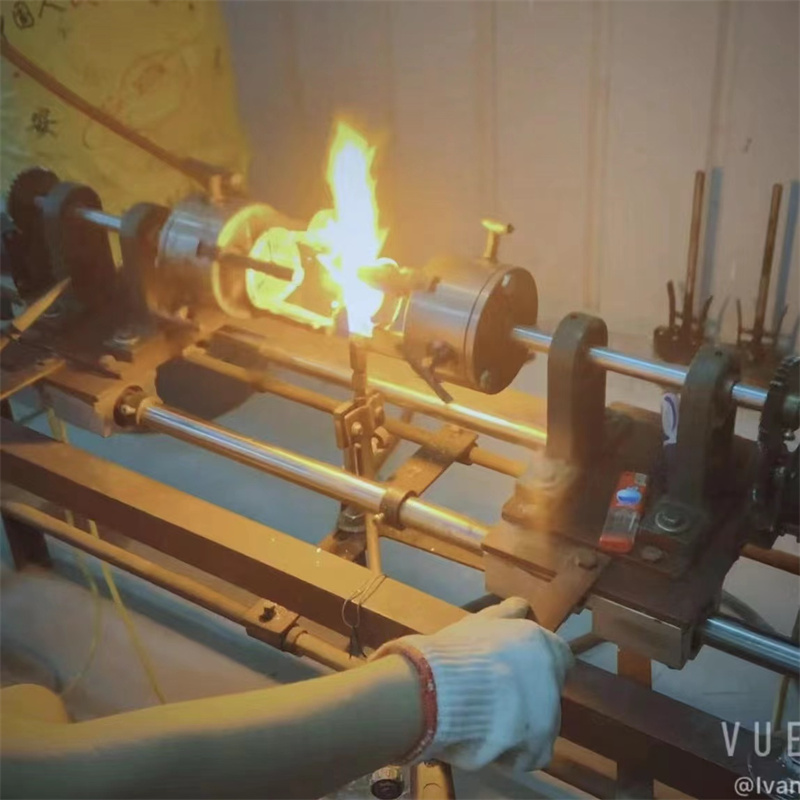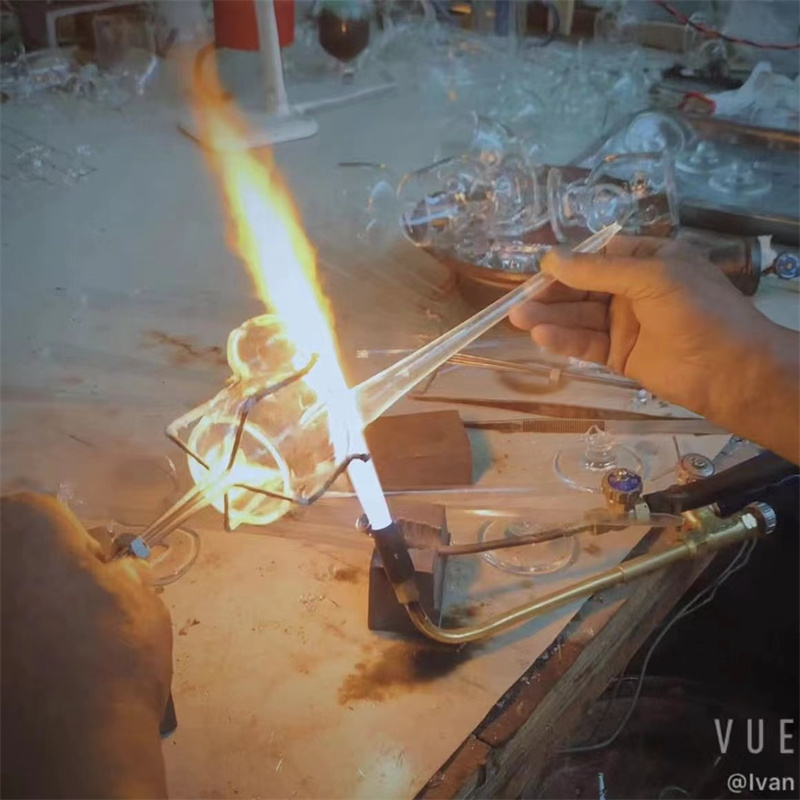What is lampworking?
Lampworking is a type of glasswork that uses a torch to melt and shape glass. Once the glass is heated to a molten state, it is formed by blowing and shaping with tools and hand movements. It is also known as flameworking.
Lampworking vs flameworking
Essentially, flameworking and lampworking are the same. “It is more a matter of terminology,” Ralph McCaskey, Glass Flameworking Department Co-Head, told us. The term lampworking originated from when Venetian glassworkers used an oil lamp to heat their glass over. Flameworking is a more modern take on the term. Present-day glass artists primarily work with an oxygen-propane torch.
History of lampworking
Traditional glass beads, with the exception of Asian and African glasswork, hail from the Venitian Renaissance in Italy. It is believed that the oldest known glass beads date back to the fifth century BC. Lampworking became widely practiced in Murano, Italy in the 14th century. Murano was the glass bead capital of the world for over 400 years. Traditional bead makers used an oil lamp to heat their glass, which is where the technique gets its name.
Traditional oil lamps in Venice were essentially a reservoir with a wick and a small tube made from rubbered or tarred fabric. Bellows under the workbench were controlled with their feet as they worked, pumping oxygen into the oil lamp. The oxygen ensured that oil vapors burned more efficiently and directed the flame.
About thirty years ago, American artists began exploring modern glass lampworking techniques. This group eventually formed the basis for the International Society of Glass Beadmakers, an organization dedicated to the preservation of traditional techniques and promotion of educational initiatives.
Post time: Sep-04-2022


